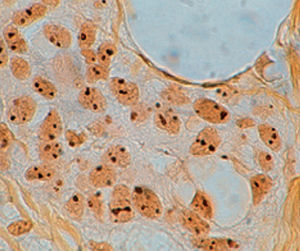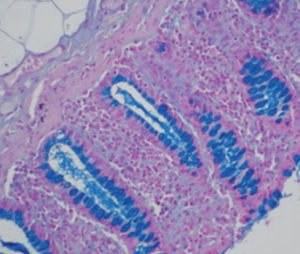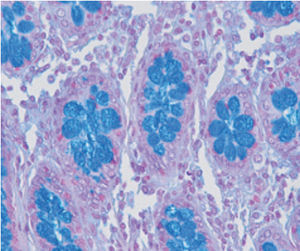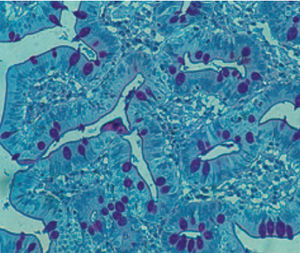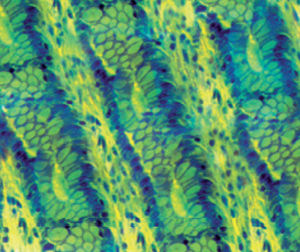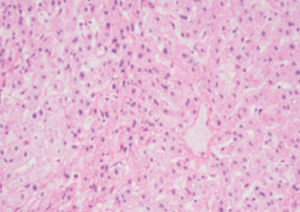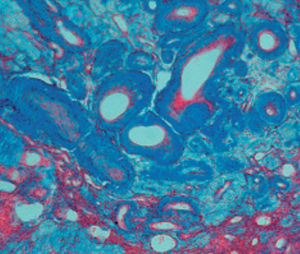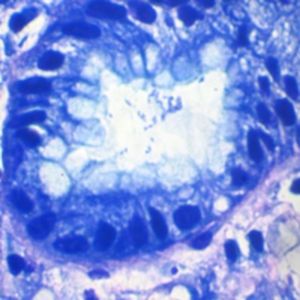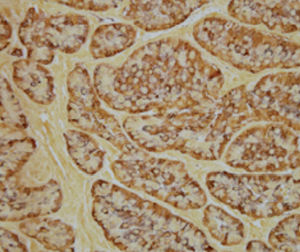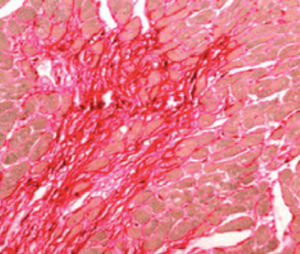
- Laboratory
- Laboratory medicine
- Staining solution reagent
- BIO-OPTICA Milano
- Company
- Products
- Catalogs
- News & Trends
- Exhibitions
Staining solution reagent Mallory trichrome for histologyfor cytology
Add to favorites
Compare this product
fo_shop_gate_exact_title
Characteristics
- Type
- staining solution
- Applications
- for histology, for cytology
Description
Minimum number of tests that can be performed 100
Completion time 20 minutes
Shelf life 2 years
Storage conditions 15-25°C
Additional equipment Not required
Application
The standard method for viewing connective tissue on histological sections; particularly
indicated for highlighting collagen, reticulum, cartilage, bone and amyloid.
Result
Nuclei, neurofibrils, myoglia,
cartilage and bone tissue
red
Collagen fibrils blue
Myelin golden yellow
Elastic fibers pale pink – yellow or colorless
Erythrocytes yellow
Product for the preparation of cyto-histological samples for optical microscopy.
Standard procedure for connective tissue; it shows collagen, reticulum, cartilage, bone, amyloid.
PRINCIPLE
In this method, three different dyes are used: carbol fuchsin for nuclear staining, orange G for cytoplasm and aniline blue for a selective collagen staining. Selectivity in this procedure is due to different degrees of affinity between dyes and tissue macromolecules. A central role is played by phosphomolibdic acid, which acts as a bound between tissue structures (collagen fibrils, cell membranes), and aniline blue (amphoteric dye). Orange G, which is the second component in Mallory’s polychrome solution, has no affinity to phosphomolibdic acid and is thus used to stain all remaining structures unbound to phosphotungstic acid.
METHOD
1) Bring section to distilled water.
2) Put on the section 10 drops of reagent A: leave to act 10 minutes.
3) Wash in distilled water.
4) Put on the section 10 drops of reagent B: leave to act 2 minutes.
5) Wash quickly in tap water (2-3 seconds) and put on the section 10 drops of reagent C: leave to act 5 minutes.
Catalogs
General Catalogue
164 Pages
Related Searches
- Bio-Optica solution reagent
- Laboratory reagent kit
- Bio-Optica histology reagent
- Reagent medium reagent kit
- Bio-Optica stain reagent
- Bio-Optica cytology reagent
- Buffer solution reagent kit
- Bacteria reagent kit
- Bio-Optica staining solution reagent
- Microscope slide
- Sample preparation reagent kit
- Pathology reagent
- Bilirubin reagent kit
- Bio-Optica fixative solution reagent
- Paraffin wax reagent
- Phosphate buffer reagent kit
- Collagen reagent kit
- Helicobacter pylori reagent kit
- Microscopy reagent
- Decalcifying solution reagent
*Prices are pre-tax. They exclude delivery charges and customs duties and do not include additional charges for installation or activation options. Prices are indicative only and may vary by country, with changes to the cost of raw materials and exchange rates.




